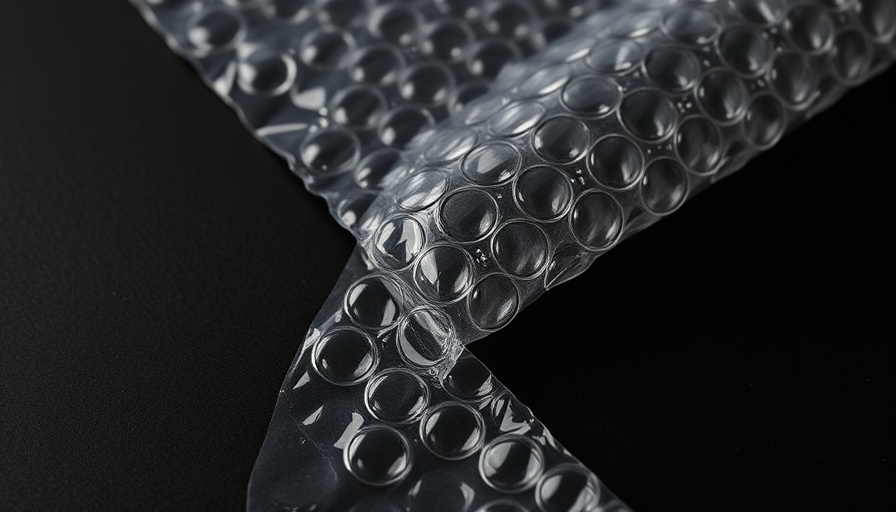
Why Bubble Wrap Is a Packing Essential for Homeowners
When it comes to moving or protecting fragile items during transport, bubble wrap is often the unsung hero. However, understanding how to use it correctly can make a significant difference in safety and efficiency. For homeowners, especially in bustling states like California, knowing the ins and outs can ensure that treasured belongings arrive intact.
The Science Behind Bubble Wrap's Design
Bubble wrap is crafted from polyethylene, created through an intricate manufacturing process where plastic beads are melted and formed into thin sheets. According to Ross Sapir, a moving expert and CEO of Roadway Moving, the unique structure stems from one side being bubble-laden while the other remains flat. This innovative design not only keeps the bubbles intact, thus prolonging their protective capability, but also ensures the wrapped items can be stacked and moved more efficiently.
The Importance of Proper Packing Techniques
Using bubble wrap may seem straightforward, but there is a meticulous technique to maximize its protective qualities. According to Sapir, the proper way to wrap items involves placing the bubble side facing inward. This technique provides superior cushioning, reducing the risk of damage by creating a vital layer between fragile surfaces and potential impact.
How to Properly Use Bubble Wrap – Step by Step
It’s important to understand the correct procedure of wrapping items with bubble wrap to avoid costly mistakes. Here’s a step-by-step guide:
- Prepare the Surface: Start with a clean, flat surface for wrapping.
- Center Your Item: Placing it in the middle ensures proper coverage.
- Encasing: Wrap bubble wrap around the item, ensuring bubbles face it, not the outside.
- Secure with Tape: Use packing tape to fasten the bubble wrap securely around your item.
- Double Wrap if Necessary: For particularly fragile items, double-wrapping is advisable.
- Final Placement: Place the wrapped item in a box filled with additional cushioning materials such as packing peanuts or crumpled paper.
Future Predictions: Bubble Wrap in the Move and Storage Industry
The movement towards sustainable packing materials is influencing the bubble wrap industry dramatically. While traditional bubble wrap is widely in use, many companies are investing in alternative eco-friendly packing materials less harmful to the environment. As awareness grows concerning environmental sustainability, it is likely that future innovations will blend the protective qualities of traditional bubble wrap with biodegradable options.
Common Misconceptions About Bubble Wrap Usage
Many homeowners assume that as long as they have bubble wrap, they’ll be fine. However, this belief can lead to issues. Not only is it crucial to know about the box's orientation and the side of the bubble wrap that should face outward, but understanding the proper application also prevents damage. Misused bubble wrap can lead to cracks, breakage, or scratches—costing not just money but also sentiment attached to cherished possessions.
Embracing Technology with Smart Packing Solutions
Interestingly, technology is redefining how we view packing. New smart packaging solutions are emerging that offer real-time updates and environmental feedback about the condition of the items packed, integrating sensors and connectivity. Savvy consumers are advised to keep an eye on these trends, as advancements in packing methods and materials can save significant costs in replacements due to damages.
Conclusion: Enhance Your Moving Experience
Understanding the intricacies of bubble wrap usage is key to protecting your valued possessions during a move or shipment. By following proper wrapping techniques and staying informed about evolving packing technologies, homeowners can safeguard their fragile items effectively.
As you prepare for your next move, consider the insights shared here and become a bubble wrap expert. Remember, it's not just about having the tools; it's about knowing how to use them properly. Happy packing!
 Add Row
Add Row  Add
Add 




Write A Comment